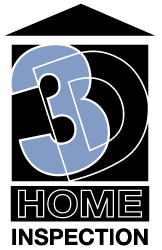One area many homeowners overlook is their garage. Most garages house things like cars, sports equipment and hazardous materials including gasoline, fertilizers and paints. As a home inspector, I often find multiple safety hazards in garages. This is especially true of attached garages.
Many homeowners aren’t aware of hazards in their garages. Others just overlook the hazards because they have always been there. Sometimes homeowners know of garage hazards, but choose not to fix them.
Because there are so many issues in garages, I have decided to split this article into two posts. The first post addresses general and structural garage hazards. Come back in two weeks to read the second part, focused on the components of a garage.
Garage Hazards and Home Inspection
During the inspection, home inspectors are mostly concerned with things that are attached to or a permanent part of the garage. When usually find things like fertilizers, gasoline, paints and auto maintenance products that we presume are leaving with the seller, In those cases, we may discuss our concerns with the buyer. But we usually don’t include them in our final report.
There are quite a few garage systems and components that a home inspector will observe and report on. They include the structure itself, electrical, finishing materials on the walls and ceiling, entry doors and steps, the vehicle entry doors, and the infamous automatic door opener. In particular, a home inspector checks for function and safety. Here are some examples:
- Is the floor relatively level or are there a trip, slip, and hazards?
- Are the wall and roof framing damaged or improperly installed?
- Are there electrical issues with receptacles, lights, or wiring?
- Is there a proper garage and house separation for fire and fumes?
- Are there safety issues with the door and steps leading into the house?
- Are the vehicle entry door and automatic door operator properly installed and functioning as intended by the manufacture?
Each of these areas of a garage inspection pose their own unique concerns. A home inspection report should always consider whether the problems are cosmetic in nature or really need to be repaired or replaced.
Garage Floor Issues
Most all garage floors are poured concrete. Asphalt is not appropriate for a garage floor because it is a flammable product. Keep in mind that the garage floor is not a structural concern. In almost all cases, safety hazards are important to repair but usually not a red flag for potential home buyers.
Garage Floor Surface Issues
I often find surface flaking or deterioration in my garage inspections. Surface deterioration can come from the material makeup or the way it’s installed. But, in most cases, the culprit is road salt. If you want to improve the appearance of your garage floor, you can consider surface repairs. But surface repairs are generally a band aid and will not last. That said, floor surface issues are not really considered garage hazards.
Garage Floor Cracks
As a concrete floor settles, the movement can cause cracks. Typically, cracks are small – usually a 1/4 inch wide or smaller – with no displacement. Cracks that are wider or ones that have vertical or horizontal displacement of a ¼ inch or more can lead to trips and falls. Some home inspectors believe that there should be at least a ¾ inch displacement for it to be a trip hazard.
There is no right or wrong answer to the height displacement requirement. Different municipalities, organizations, or associations have their own definition of what is considered a trip hazard. Ultimately, home owners and their families should determine what is an acceptable difference in height. Garage hazards for one family may be minor inconveniences for another. For example, a height difference as small as ¼ inch could pose a risk to older and very young family members.
Garage Wall and Roofing Issues
The wall and roof framing are part of the structure. Home inspectors should really focus on finding any damage or installation issues. In most cases, problems we find with garage walls and roofs are not difficult to fix. But these repairs are usually not a good project for homeowners to take on. A qualified carpenter will know what to do and how to do it properly and safely.
Stay tuned for the next post, which will cover garage hazards related to the vehicle door, automatic door operator, steps, and the house and garage separation for fire and fumes.
